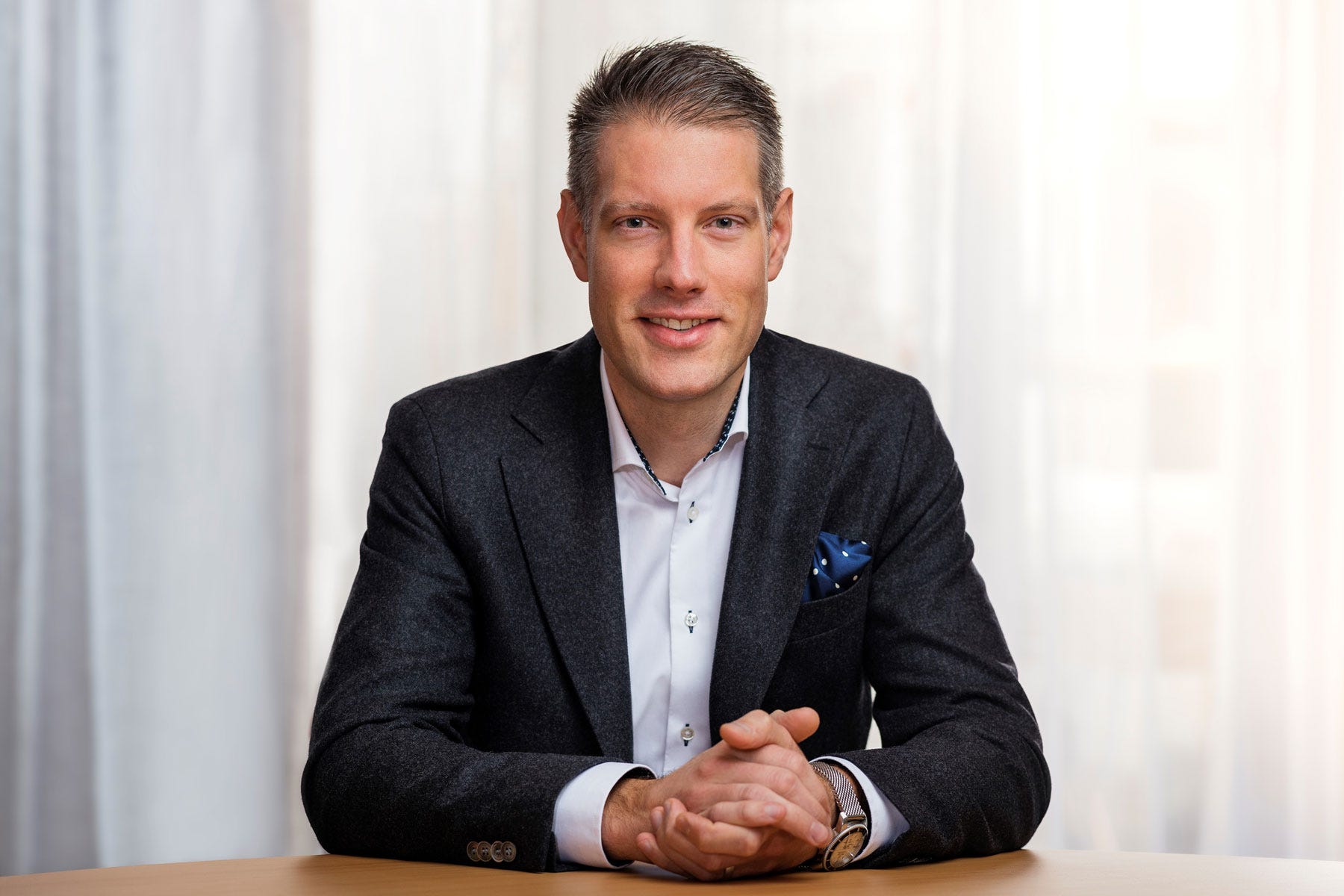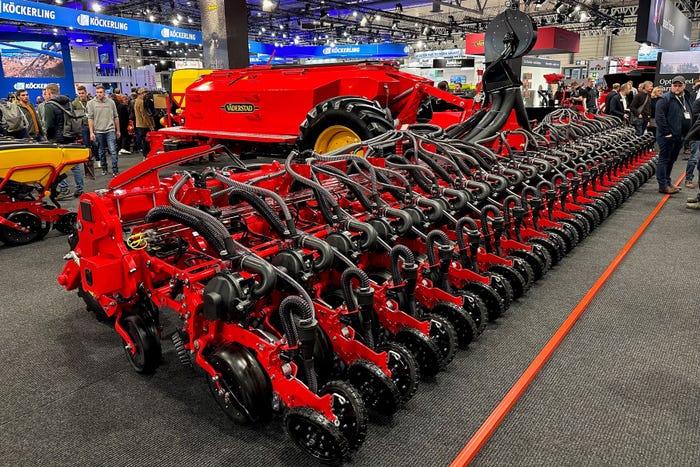December 26, 2023

The North American farm equipment market is a popular target for global manufacturers looking to expand business, but access can be a challenge. For Swedish equipment maker Vaderstad, a mix of acquisitions and innovation is helping build a presence beyond its initial foothold in Canada and the northern U.S.
Discussing Vaderstad’s move into the U.S. market, CEO Henrik Gilstring says the first step came in 2006 with the purchase of Seed Hawk, a Canadian seeding company. That kicked off Vaderstad’s journey to build business in North America.

MEET THE BOSS: Henrik Gilstring, CEO of Vaderstad, says the company is mating its record-beating planter tech with U.S.-friendly engineering to offer farmers innovative equipment. The company is also a leader in tillage tech.
“To us, it just makes a lot of sense. In Seed Hawk, I mean that was a quite small company when we started to get involved in 2006,” Gilstring recalls. “Then with a bit of investment from us and the strength of the concept and the dedication of the team, success has been very good in [that market] and in Australia.”
In the last few years, Gilstring says investment in seeding technology with Seed Hawk helped build the company’s position in air seeders, but mainly in Canada and some Northern states. The larger U.S. market presented a challenge. “To grow from scratch in the U.S. is a quite complicated venture and time-consuming,” he says.
Purchase helps its U.S. marketing
The company was able to jump-start its U.S. marketing strategy in 2021 with the acquisition of Wil-Rich, which also included the Wishek and Concord brands. “We were really happy and fortunate that the opportunity came along to acquire the business in Wahpeton [N.D.] where we gained a factory, staff and the knowledge for our portfolio that suits the needs of the American farmer,” Gilstring says.
One challenge any company has when entering the U.S. market is access to a dealer network to sell and support equipment. The Wil-Rich acquisition gave Vaderstad that important foot in the door on the marketing side.
Gilstring says the tillage portfolio is strong in the Wil-Rich brand, which includes a planter bar that will work well with Vaderstad’s European row unit. “That planter bar coupled with the world’s best row unit — the Tempo unit — can obviously create a very attractive offering for American farmers,” he says.
For 2024, farmers will see the Tempo row unit on machines designed for the U.S. farmer in the field for the third growing season. And given the U.S. need for central-fill planters, the company plans to sell the Tempo K — a Tempo meter coupled with a U.S.-based central-fill system — for the 2025 growing season.
Tagging the Tempo row unit as the world’s best, Gilstring can back that claim up. A Vaderstad planter with Tempo row units holds the world record for seeding a crop. A Tempo L with 16 individual hopper row units had a “pit crew” filling units to keep the planter moving at top speed.

LEVERAGING TECH: This center-fill planter system offers a three-tank design for North America. The U.S. version will be a 24-unit machine on 22-inch spacing, popular in the Red River Valley of the Dakotas and Minnesota. The unit shown here has more row units to show future potential.
The Tempo row unit, which relies on positive pressure rather than a vacuum as seen in other planters, “shoots” the seed into the ground, and a press wheel ensures the seed doesn’t bounce. That approach reduces the number of moving parts on the row unit while still providing high-speed planting. The record-holding planter worked at an average speed of 12 mph.
Patience in market building
And with that planter technology, Vaderstad has grown to become the No. 1 planter maker in Europe. The Tempo row unit will be a key component on the planters entering the U.S. this year. But that work also shows the company is willing to invest to build market share over time.
“We always take a gradual approach to growth, both with new products and with new markets,” Gilstring says. “We have a base with the current business in Wahpeton, and we will grow gradually from there.”
Comparing the North American market with Europe’s, Gilstring says, “I would say in the North American context, that the dealer has an even bigger role. So, to have a strong dealer network is critical, and I think we’ve managed to build a really good dealer network in western Canada and eastern Canada. And now we also have a good base in the United States.”
In Europe, he says companies have more direct customer contact from the factory, even having their own sales subsidiaries in some markets. In North America, however, that falls to the dealer, he says, noting that the relationship is working well. “With those collaborations, we really appreciate that it works well that the dealer really takes care of the customer,” he says.
That dealer development is continuing as the company works to expand offerings in more areas in the United States. Gaining access to dealerships already carrying major lines can be a challenge, but Gilstring doesn’t see it as a major hurdle. “We find that when the customer wants what we offer, it’s difficult for the dealer not to offer it,” he notes. “I found that that dynamic actually works in our favor.”
Leveraging investment with an existing dealer network and building from there is a strategy Gilstring sees as a way to build market position in the future. The air seeder, tillage and planter technology the company offers is already getting farmers’ attention. Learn more at vaderstad.com.
Read more about:
PlantersAbout the Author(s)
You May Also Like






